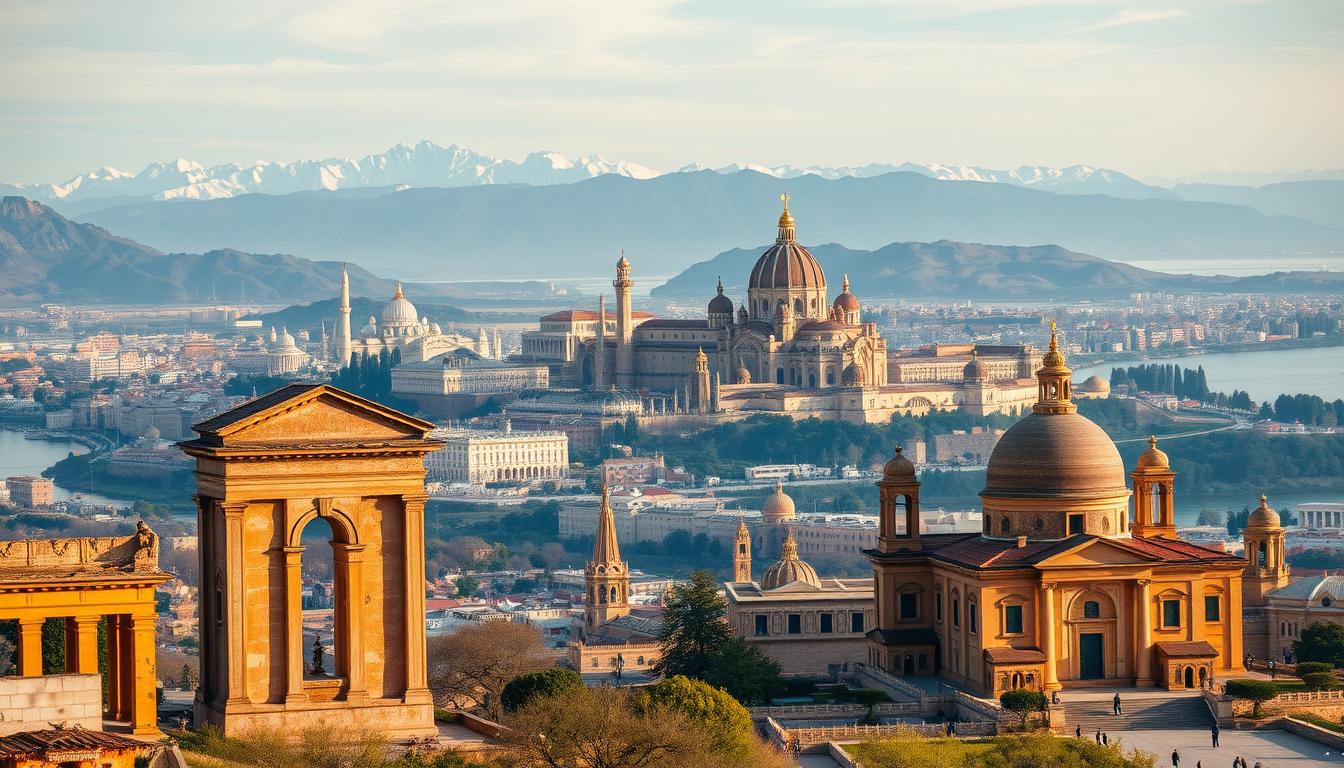Top UNESCO World Heritage Sites to Visit
Did you know less than 20% of locations nominated for world heritage status actually make the list? This exclusive group protects humanity’s most extraordinary achievements, from 2,000-year-old temples to ecosystems older than dinosaurs.
Our planet’s cultural treasures and natural marvels tell stories no history book can capture. Imagine walking through jungles hiding ancient cities or standing before monuments that shaped civilizations. These places aren’t just pretty backdrops—they’re living classrooms.
Experts select each heritage site through strict evaluations. Only locations showing “outstanding universal value” earn protection. This means every destination here offers something truly special you won’t find elsewhere.
Ready to explore glacial fjords, desert fortresses, and coral reefs bursting with life? This guide reveals destinations that spark wonder while teaching us about Earth’s diverse cultures. Let’s discover why these spots matter—and how to experience them responsibly.
Key Takeaways
- Over 1,100 locations worldwide hold UNESCO’s prestigious designation
- Sites represent both human-made wonders and untouched natural landscapes
- Selection process focuses on historical significance and preservation needs
- Many locations offer guided tours for deeper cultural understanding
- Visiting supports conservation efforts through entry fees
- Mix iconic landmarks with lesser-known gems for balanced trips
Introduction to the World Heritage Phenomenon
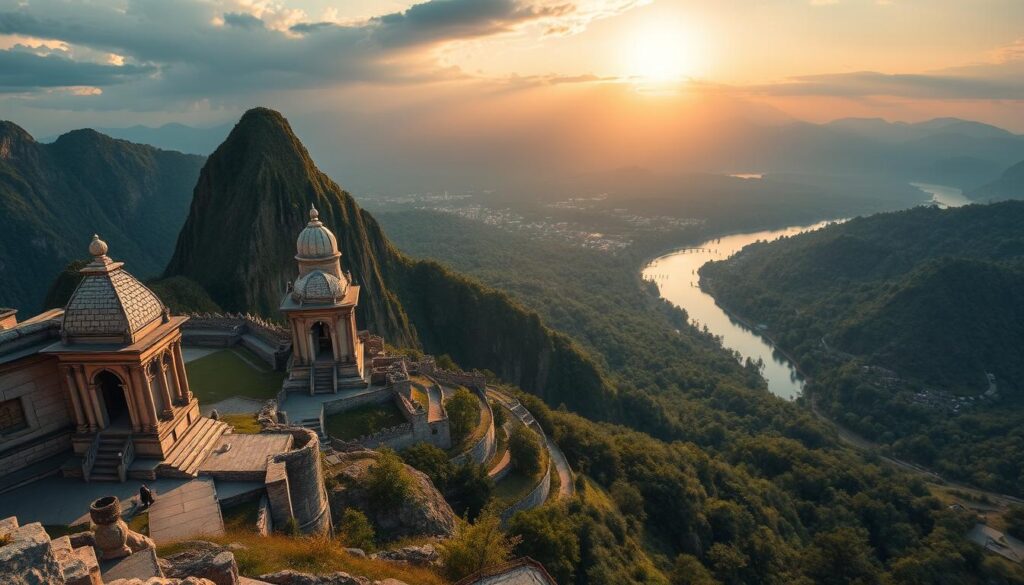
Over 190 countries united in 1972 to create something extraordinary – a global pact to protect Earth’s crown jewels. This agreement, known as the World Heritage Convention, became humanity’s shared promise to safeguard places that tell our collective story.
What Defines a World Heritage Site?
To earn global recognition, a location must pass strict tests. Experts evaluate if it shows:
- Unmatched cultural achievements (like ancient temples)
- Groundbreaking architectural innovations
- Critical natural habitats or geological wonders
Only spots demonstrating “outstanding universal value” make the list world heritage professionals respect. Think of Italy’s leaning tower or Australia’s Great Barrier Reef – each teaches us something unique about human creativity or nature’s power.
The Guardians of Global Treasures
The international body behind this system doesn’t just create lists world admirers – it actively protects. When disasters strike or funds run low, member nations mobilize resources. Over 193 countries now participate, proving that borders fade when preserving our shared legacy.
“Heritage is our legacy from the past – what we live with today, and what we pass on to future generations.”
This cooperation helps maintain heritage sites through expert training, emergency grants, and sustainable tourism plans. Your visit directly supports these efforts through entry fees and local partnerships.
UNESCO Sites to Visit: Must-See Global Treasures
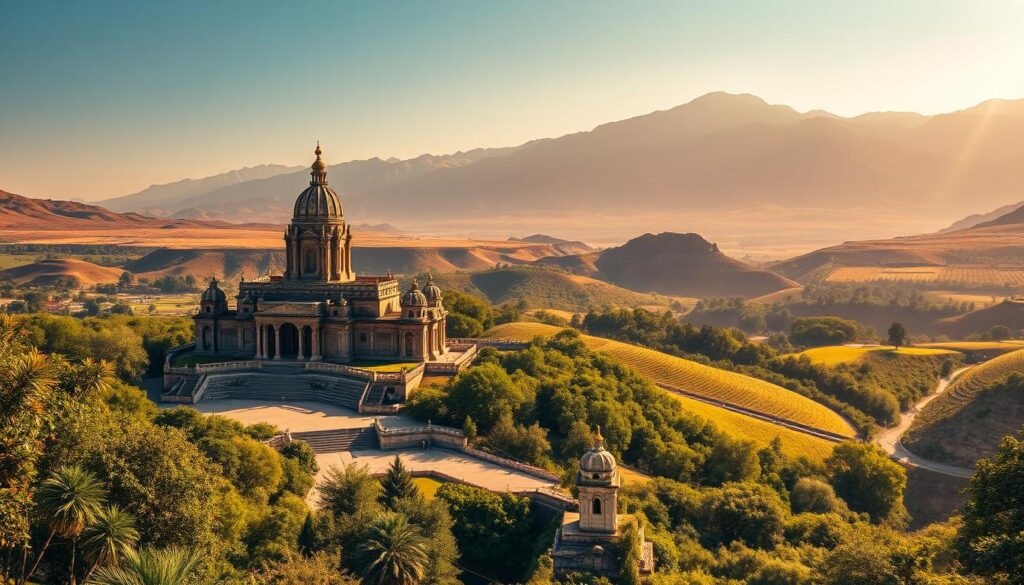
Imagine standing where civilizations began or hiking through landscapes unchanged for millennia. The global list of protected locations offers these experiences through three distinct lenses: cultural landmarks, natural wonders, and rare hybrids of both.
Understanding the Cultural, Historical, and Natural Criteria
Cultural gems tell humanity’s story in stone and art. Think pyramids whispering ancient secrets or medieval towns frozen in time. These spots reveal how societies evolved through architecture, traditions, and artistic triumphs.
Nature’s masterpieces get equal recognition. Towering redwood forests and coral reefs teeming with life fall into this category. These ecosystems act as living laboratories, showing Earth’s processes in action while sheltering endangered species.
The rarest entries blend human genius with environmental splendor. Picture terraced rice fields carved into volcanic slopes or cliffside monasteries surrounded by mountain ranges. These locations prove culture and nature can coexist spectacularly.
Choosing destinations across these categories creates richer journeys. You might marvel at Gothic cathedrals one day and kayak through bioluminescent bays the next. Each visit supports local economies while preserving irreplaceable treasures for future explorers.
Historical Evolution and Cultural Legacy
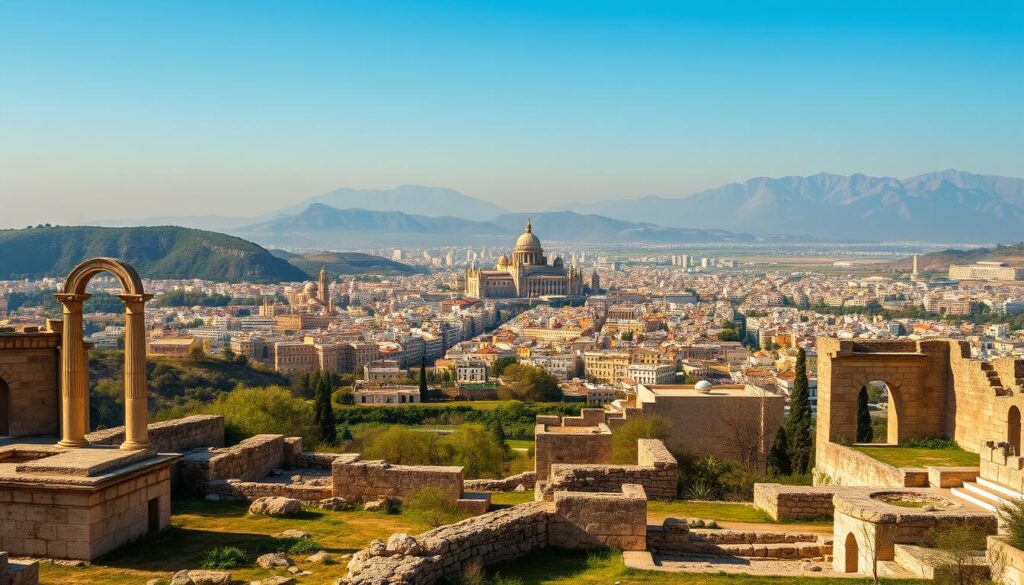
The journey to preserve our planet’s treasures began with a revolutionary idea in the 20th century. Global leaders realized that some locations hold value beyond national borders – they belong to all people. This vision sparked collaborative efforts to protect humanity’s shared story.
Milestones in Global Preservation
1978 marked a turning point when twelve locations earned world heritage site status. The inaugural list world heritage included marvels like Ecuador’s Galápagos Islands and Poland’s Wieliczka Salt Mine. These pioneers set benchmarks for evaluating cultural depth and ecological significance.
Modern preservation blends traditional methods with cutting-edge tech. Laser scanning now documents fragile structures, while local communities lead restoration projects. This development ensures authentic care for archaeological sites spanning multiple centuries.
Echoes of Ancient Ingenuity
Walk through Jordan’s Petra or Cambodia’s Angkor Wat, and you’ll witness engineering feats from years ago. Early civilizations mastered water systems, earthquake-resistant designs, and artistic expression that still awe visitors today.
Many protected areas reveal layered histories. Mexico’s Teotihuacán pyramids show how successive cultures built upon earlier foundations. These sites remind us that human creativity thrives across generations – and deserves thoughtful safeguarding.
Natural Wonders and National Parks
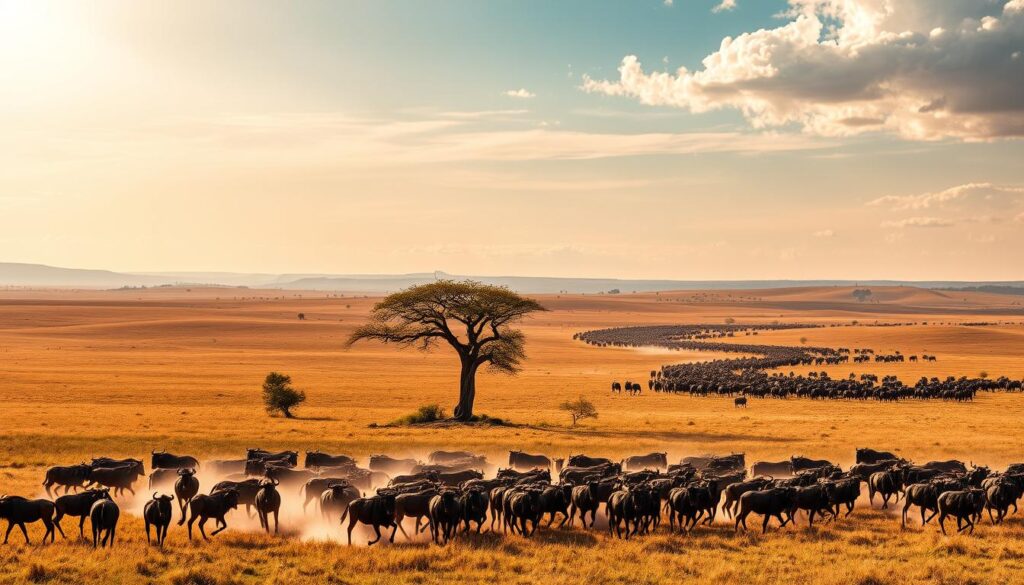
Earth’s wild places hold stories written in stone and soil. Two protected areas stand out as living textbooks of natural history. Tanzania’s endless plains and California’s granite cliffs reveal how landscapes shape life itself.
Where Nature Writes Its Greatest Stories
The Serengeti’s golden grasslands stage nature’s most spectacular show. Each year, two million hooves pound the earth during the Great Migration. Wildebeest and zebras chase rains across 5,700 square miles, trailed by lions and crocodiles waiting their turn.
Yosemite’s valley tells a different tale. Glacier-carved cliffs like El Capitan rise 3,000 feet, challenging rock climbers. Ancient sequoias tower overhead, their bark scarred by centuries of forest fires. These natural wonders prove wilderness needs no polish to inspire awe.
| Feature | Serengeti | Yosemite |
|---|---|---|
| Iconic Sight | Big Five wildlife | Half Dome peak |
| Best Experience | Hot air balloon safari | Mist Trail hike |
| Conservation Focus | Migration corridors | Giant sequoia protection |
“Wilderness is not a luxury but a necessity of the human spirit.”
Both parks balance tourism with protection. Safari fees fund anti-poaching patrols in Tanzania, while Yosemite’s shuttle system reduces traffic. Visitors become partners in preservation simply by walking these wild trails.
Morning fog lifting over acacia trees. Sunset painting El Capitan gold. These moments remind us why we protect Earth’s last wild spaces – and what we gain when we do.
Architectural Marvels and Iconic Monuments
![]()
Human hands have shaped stone into poetry across continents and eras. These structures reveal our ancestors’ boldest dreams – temples reaching for heavens, palaces defying gravity, and tombs preserving eternal love.
Symmetry and Grandeur: Taj Mahal and Beyond
The Taj Mahal floats like a marble cloud at dawn. Shah Jahan’s 17th-century tribute to his wife combines Islamic arches, Persian gardens, and Indian craftsmanship. Twenty thousand workers spent 22 years perfecting its balanced design – four minarets framing a central dome that mirrors paradise.
This ivory-white monument shows Mughal engineering genius. Underground wells prevent river erosion, while the main chamber stays cool through clever air circulation. Visitors today still gasp at floral carvings so delicate they seem to sway in the breeze.
From Gothic Cathedrals to Neoclassical Edifices
Europe’s skyline tells another story in stone. Medieval masons built Gothic cathedrals with ribbed vaults and flying buttresses – solutions that let walls soar skyward while holding tons of stained glass. Chartres Cathedral’s 13th-century labyrinth still draws pilgrims seeking spiritual connection.
Later architects revisited classical ideals. The Roman Empire‘s arches and columns returned in 18th-century civic buildings, blending ancient proportions with modern functions. From Washington’s Capitol Hill to Paris’ Panthéon, these structures celebrate democracy through timeless geometry.
Whether exploring Buddhist temples or Baroque palaces, these wonders world travelers cherish remind us: great buildings outlive their builders. They stand as conversation starters between generations, whispering secrets of the Roman Empire‘s concrete recipes and Renaissance artists’ optical tricks.
Ancient Cities and Timeless Ruins
Stone whispers secrets across continents where ancient cities stand as time capsules. These urban ghosts challenge modern assumptions about engineering and community planning.
Mountain Citadels and Lion Cliffs
Perched 7,970 feet high, Machu Picchu’s 15th-century terraces cling to Andean peaks like stone lace. This ancient city baffles experts with its earthquake-resistant walls and celestial alignment. Engineers still study how Inca builders moved 50-ton granite blocks without wheels.
Half a world away, Sri Lanka’s Sigiriya rock fortress rises 660 feet above jungles. Built 1,500 years ago, this historic city features frescoes older than the Sistine Chapel. Its mirror wall still reflects sunlight through ancient poetry etched by visitors.
Both locations reveal clever adaptations. Machu Picchu’s drainage systems prevent flooding during monsoon rains. Sigiriya’s gardens used hydraulic tech 10 centuries ahead of Europe. These archaeological sites prove our ancestors mastered their environments in ways we’re just beginning to understand.
Walking these paths connects you to civilizations that shaped trade routes and spiritual practices. Their silent stones urge us to look beyond ruins – toward the living cultures keeping these stories alive.
FAQ
What makes a location qualify as a World Heritage Site?
Why are national parks like Yosemite and Serengeti on the World Heritage List?
How does UNESCO help preserve ancient cities like Machu Picchu?
Can a site be removed from the World Heritage List?
What’s the difference between cultural and natural criteria for selection?
Are all World Heritage Sites open to the public?

Sharon Molly is a content creator in lifestyle, fashion, and travel, delivering style-savvy advice and destination insights to inspire confident living. With a background in digital media, she combines aesthetics with practical guidance for modern women on the go.

